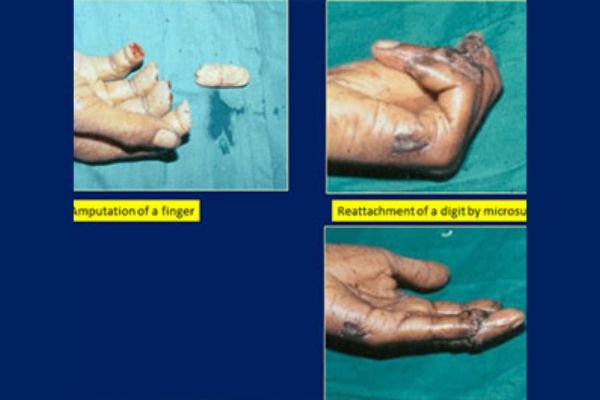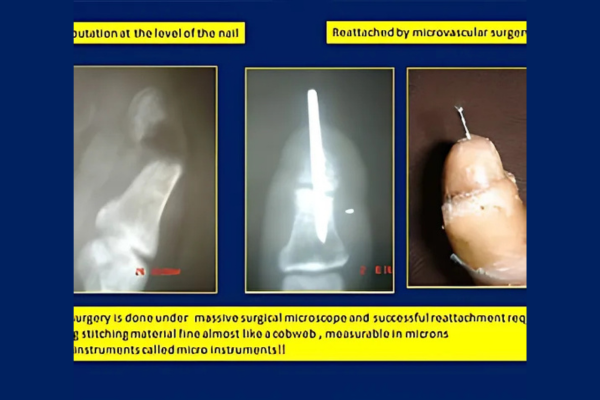Traumatically Amputated Fingers
Traumatically-amputated fingers and hands are replanted (reattached) by us routinely and successfully since 1991.
Recent Cases
{"cpt":"blog","style":"1","columns":"3","show":"6","from_category":["amputation"],"order":"DESC","orderby":"none"}
Expert Care for Amputation Treatment You Can Trust
Book Your Appointment Now!
CALL: +91 98220 31140
Frequently Asked Questions
Consectetur adipisicing elit, sed do eiusmod tempor incididunt ut labore et dolore magna aliqua. Ut enim ad minim veniam, quis nostrud laboris nisi ut aliquip ex ea commodo consequat. fugiat nulla pariatur. Nemo enim ipsam voluptatem quia voluptas voluptatem.
While it may seem minor, untreated Blue Finger can lead to complications like permanent damage or loss of functionality.
Yes, by avoiding prolonged exposure to cold, managing stress, and seeking timely medical care for hand injuries
Recovery varies depending on the severity and treatment method but typically ranges from a few weeks to a few months.



